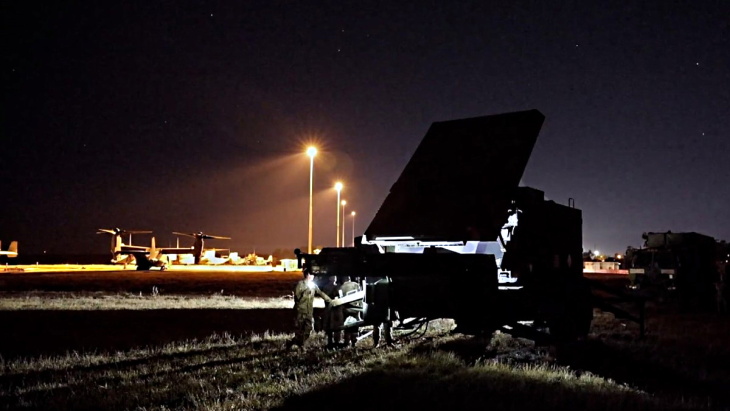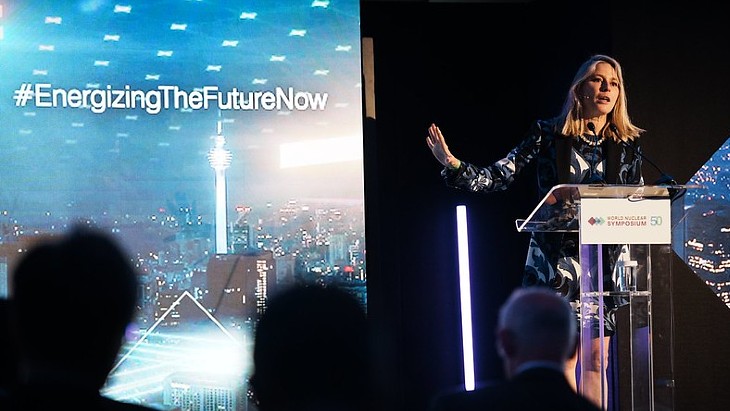The process to qualify reactor designs is progressing in the UK. As part of this process, regulators there and in Finland have raised questions about EPR's instrumentation and control.
Information from both countries' nuclear safety regulators has shed
light on the tough task reactor vendors face in proving the safety of
new designs ahead of use.
.jpg) |
| The support ring for Olkiluoto 3's reactor pressure vessel is installed on 23 July. Control and instrumentation equipment cannot be put in until the Finnish regulators are satisfied (Image: Teollisuuden Voima Oyj) |
The UK Health and Safety Executive (HSE) said it was making "good progress" in assessing Areva's EPR and Westinghouse's AP1000 and it remains confident of signing off the Generic Design Assessment (GDA) process on time in June 2011.
During GDA, regulators have asked hundreds of technical questions of Areva and Westinghouse with the figure increasing exponentially in the last three months. This indicates that the pace of work has picked up dramatically since the HSE attained full staffing levels in recent weeks.
The queries can be divided into several main areas, with HSE finding shortfalls of information from vendors in some of these. Should the HSE's technical queries remain unsatisfied during the process, these issues could be escalated to a 'regulatory issue' which could ultimately result in 'exclusions' from GDA. This means a reactor could be accepted as safe for use except for the excluded area, which would have to be licensed under a separate process.
Specific queries
For both reactors, the HSE raised a regulatory issue in February last year concerning factors such as dose assessment, waste strategy and impact on non-human species and requested a more detailed demonstration that its demands are being met. This was closed out by both vendors within six weeks.
The HSE has since identified potential exclusions for AP1000 in the areas of civil engineering and structural integrity. A company spokesman told World Nuclear News: "The classification of these areas as 'potential exclusions' reflects that fact that there remains substantial work to be done on these topics to demonstrate to the HSE that the design is acceptable. We are in the process of doing that work, and remain confident that in these respects - as in all others - the UK regulators will conclude that the AP1000 is safe to operate."
For EPR there is a regulatory issue and corresponding potential exclusion concerning control and instrumentation (C&I). Specifically, the HSE remains to be convinced that the systems for control and that for instrumentation are sufficiently independent and diverse. The HSE has told Areva that the C&I architecture appears overly complex and may rely too much on computer-based systems which have a high degree of connectivity.
Finland a proving ground
The situation in the UK with EPR is similar to that in Finland, where regulators Stuk have repeatedly asked for more information on C&I systems for the EPR under construction at Olkiluoto. The latest development has been that Stuk has allowed more time for additional proof of systems' suitability, moving the deadline from the end of this week to the end of September. The body, however, has been pursuing sufficient proof since December 2008 when it first made a formal request for more information.
Kim Wahlstroom of Stuk told WNN that it will not issue an operating license for Olkiluoto 3 if the information doesn't come, but that such a scenario was not realistic. "The only question is how they can prove the design is safe," he said, adding that he was "quite sure they can qualify it." Installation of C&I equipment cannot begin until Stuk gives the go-ahead, despite the ongoing nature of the construction. Areva said it is working closely with Stuk and the HSE as well as EDF Energy and TVO to meet each country's regulatory needs.
The British GDA and American design certification processes specifically avoid this problem by completely assessing and certifying the design long before construction work is allowed to start.
Wahlstroom said that the systems for Olkiluoto 3 and the planned US EPRs were different from those in the UK and France in that they have a hard-wired backup. This, he said, makes qualification simpler by reducing the number of programmable elements to be proven. The HSE said in its letter to Areva that the addition of such a back-up could be a way forward.




_69218.jpg)

_81209.jpg)
_50545.jpg)
_76087_55556.jpg)




